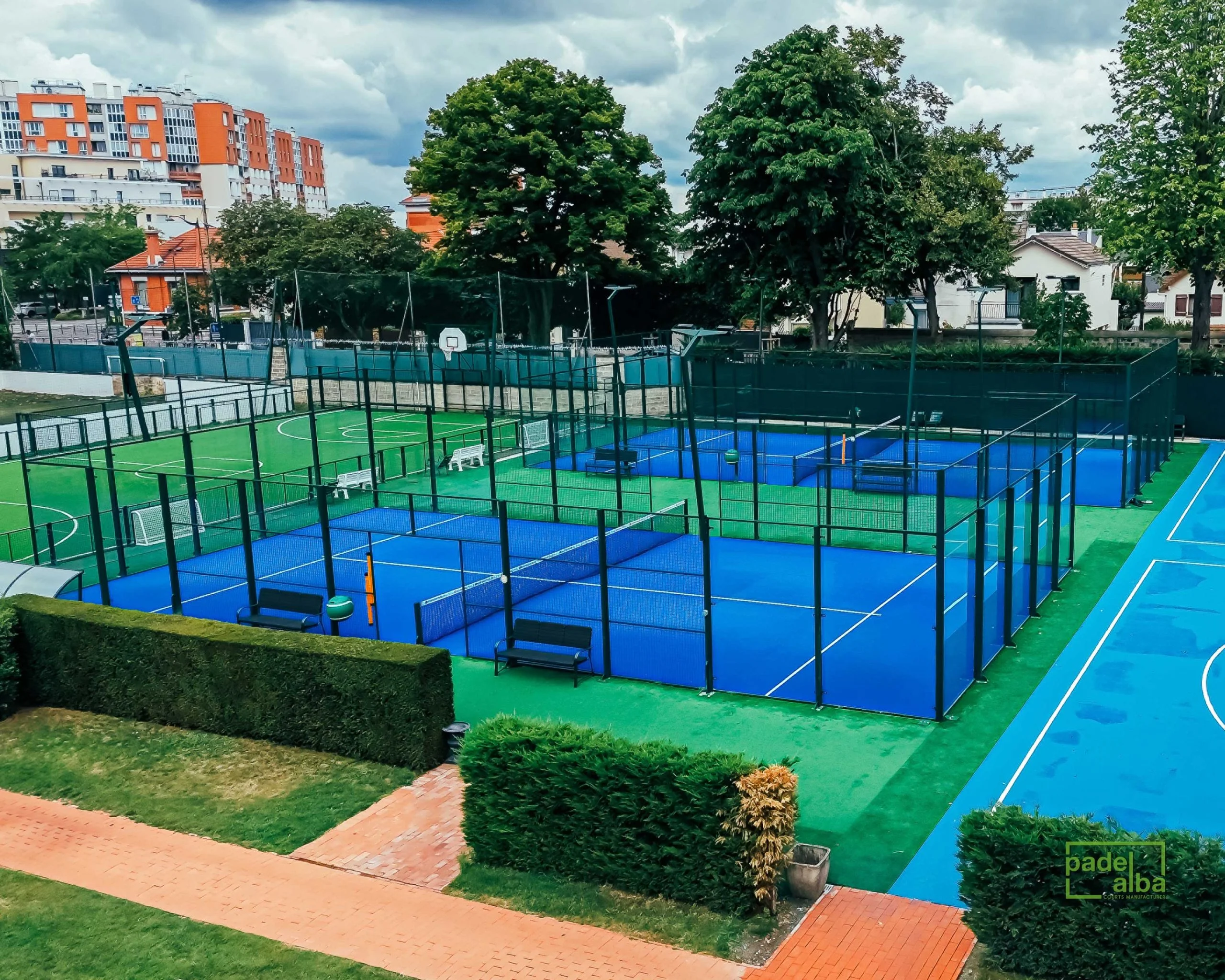Padel tennis is a sport that is booming around the world, fusing the best of tennis and squash, and attracting the majority of athletes because of its social and accessible nature. Given this trend, many are seeing the potential of transforming their tennis courts into padel tennis venues.
Although the process requires planning and attention to detail, in this post we will show you how to do it step by step. Let’s get to it!
Step 1: Pre-assessment
Before making any modifications, homeowners should consider several factors. These include the measurements and orientation of the existing court to determine how many padel courts can fit.
It is very important to inspect the condition of the ground, looking for cracks or drainage problems, and the opinion of an expert in sports facilities could be useful. It is no less important to evaluate the surrounding space, as padel courts require additional width for safety reasons, and to consider elements such as fencing and lighting.
Step 2: Planning and design
In this phase you must adapt the dimensions of the court areas to the available space, select suitable materials and a floor that provides good grip and safety for the players. In addition, uniform lighting should be guaranteed for night games andadequate wire mesh fences should be established to protect and efficiently contain the balls.
Step 3: Dismantling process of the tennis court
The first step is to carefully remove the wiring and posts to leave a clear surface. Once these items are removed, the next step is to prepare the ground, making sure it is level and ready for installation, addressing any irregularities or drainage issues that may arise.
Step 4: Construction of the padel tennis court (link to the post How To Build A Padel Tennis Court Step By Step)
For the construction of the court, thick walls suitable for its specific use must first be installed. Then, on the previously conditioned surface of the tennis court, artificial turf, designed to provide optimal grip in the playing area, is laid. Finally, it is completed with efficient lighting and the installation of nets, ensuring a complete playing experience.
In this link you can learn more about the complete process of building a padel tennis court, step by step.
Step 5: Padel Court Accessories
Padel tennis courts require specific accessories for proper play. These include the following:
- Padel net: Padel nets are shorter than tennis nets and are designed to allow the ball to bounce off them while still providing a challenge for players.
- Padel rackets: Padel rackets have no strings and are solid rackets with holes, resembling a cross between tennis and squash rackets.
- Benches and chairs: Perfect for players to rest and for spectators to watch the game.
Step 6: Opening and promotion
Once the padel tennis court is ready, it’s time to announce its opening to the public. Use a variety of marketing and promotional strategies to attract both padel enthusiasts and beginners. Consider offering introductory classes, hosting tournaments or creating membership packages to attract the community and ensure a successful launch.
Step 7: Costs and budget (link to the post Is It Cost Effective To Set Up A Padel Tennis Court?)
When approaching the project, it is vitally important to take into account various expenses including: labor, procurement of materials, obtaining the licensing agreement and other associated costs. Although the initial investment may seem high, it is necessary to compare it with the potential return, as padel tennis courts tend to be in high demand, which can generate income and justify the investment made in the medium to long term.
Visit the following link for more information about the profitability of setting up a padel tennis court.
Conclusion
This guide makes it clear that this transformation is not just a fashion statement, but represents a strategic long-term investment. The revitalization of disused areas, the attraction of new members and cost-effectiveness due to reduced maintenance are key advantages.
However, meticulous planning and execution of the process, from initial assessment to post-construction promotion, is essential. Despite the significant initial investment, the potential return, given the high interest in padel tennis, makes the project worthwhile and can generate income in the future.



